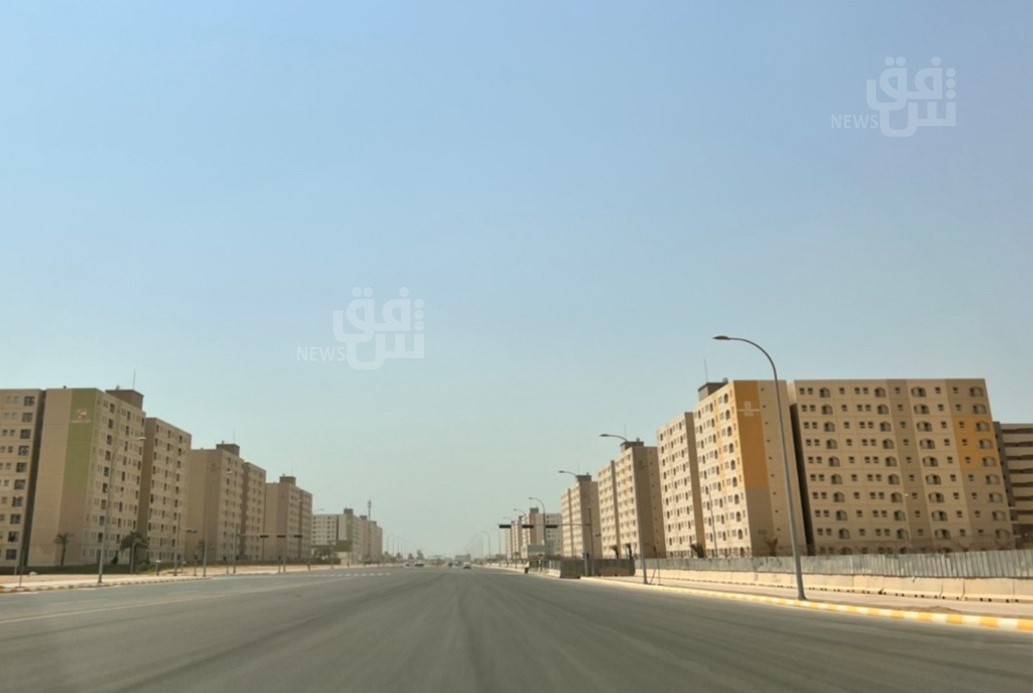While observers confirmed that the population census revealed the depth of the housing crisis in Iraq, and while the Iraqi Ministry of Construction and Housing confirms that Iraq needs more than 3 million housing units, specialists presented proposals to solve this crisis to avoid what is currently happening in residential complexes that witness exorbitant prices beyond the means of the poor and middle classes .
Iraqi Prime Minister Mohammed Shia al-Sudani announced last Monday (November 25) that the country’s population, according to the general population and housing census, has reached more than 45 million people, the number of families has reached 7 million, 898 thousand, and 588 families, while the number of dwellings has reached 8 million, 37 thousand, and 221 dwellings, the percentage of floors is 92.1, the percentage of apartments is 6.6 percent, and the percentage of mud houses is 4 per cent .
The spokesman for the Iraqi Ministry of Construction and Housing, Istibraq Sabah, said, “The population census outputs revealed to the ministry the current data and the extent of the shortage in housing projects, roads and bridges, etc., and this is useful for drawing up future policies and strategies for the ministry’s related projects .”
3 million housing units needed
Sabah explains that “Iraq needs more than 3 million housing units, and since vertical housing is distinguished from horizontal housing in that it saves land areas, saves a lot of construction costs and infrastructure supplies, and creates a kind of social familiarity between residents in a single residential complex, the ministry has moved towards vertical housing in new projects at a rate estimated at 10 to 20 percent in each new residential city .”
But the economic researcher, Abdul Salam Hassan Hussein, says that “the population census has exceeded 45 million people, according to what was officially announced, but this announcement came despite the census teams not having reached many areas yet .”
Hussein believes that “the rush to announce the census results was to gain the public’s approval, as the census was supposed to be completed first and then the results would be announced. Therefore, the current numbers are inaccurate, while expectations indicate that the population numbers may reach 53 million people when covering all areas in Iraq .”
He continues, “In general, Iraq needs 4 million housing units, with each unit not exceeding 100 square meters in size, to save time and speed up implementation. It is preferable for the construction to be of concrete casting, i.e. (bricks, reinforcement, a good foundation, and tight connections), and not ready-made casting, as the latter is vulnerable to collapse due to the vagaries of nature, hurricanes, and winds .”
Deep housing crisis
For his part, the economic expert, Ahmed Abdul Rabbo, confirms that “the population census revealed the depth of the housing crisis in Iraq, which needs radical solutions, while the random houses and agricultural lands caused great pressure on service projects (water and sewage) in the regular areas, and thus affected the services provided to citizens .”
Abdul Rabbo proposes solving the housing crisis in two directions: “The first is to provide serviced lands to citizens and sell them to them at reasonable prices, and the second is to have a company to market these apartments at competitive prices, unlike what is currently happening in residential complexes that witness exorbitant prices, and no citizen, even those with an average income, can buy from them .”
In turn, the economic expert, Karim Al-Helou, attributes the housing crisis in Iraq and the rise in prices to the fact that “development is not at the same level between the governorates, so there is migration from one place to another in search of work. After the residential complexes were for those who could not live and at the cost of construction only, this matter was canceled in 2018. ”
Al-Halou explains that “cancelling this decision allowed unjust traders to enter the real estate market and raise prices. After a housing unit was worth 250 million dinars, it became one billion dinars .”
Money laundering
He believes that “traders’ purchase of hundreds of residential units is money laundering after the crackdown on smuggling operations abroad, so the trend has shifted to buying real estate, which has raised its prices insanely .”
He points out that “residential complexes are supposed to be of different types to include different classes (poor, middle and upper class), while it is noted that there are few vertical residential complexes, but rather most of them are horizontal complexes, and these require a larger area and infrastructure, which is a major problem .”
Source: Agencies






